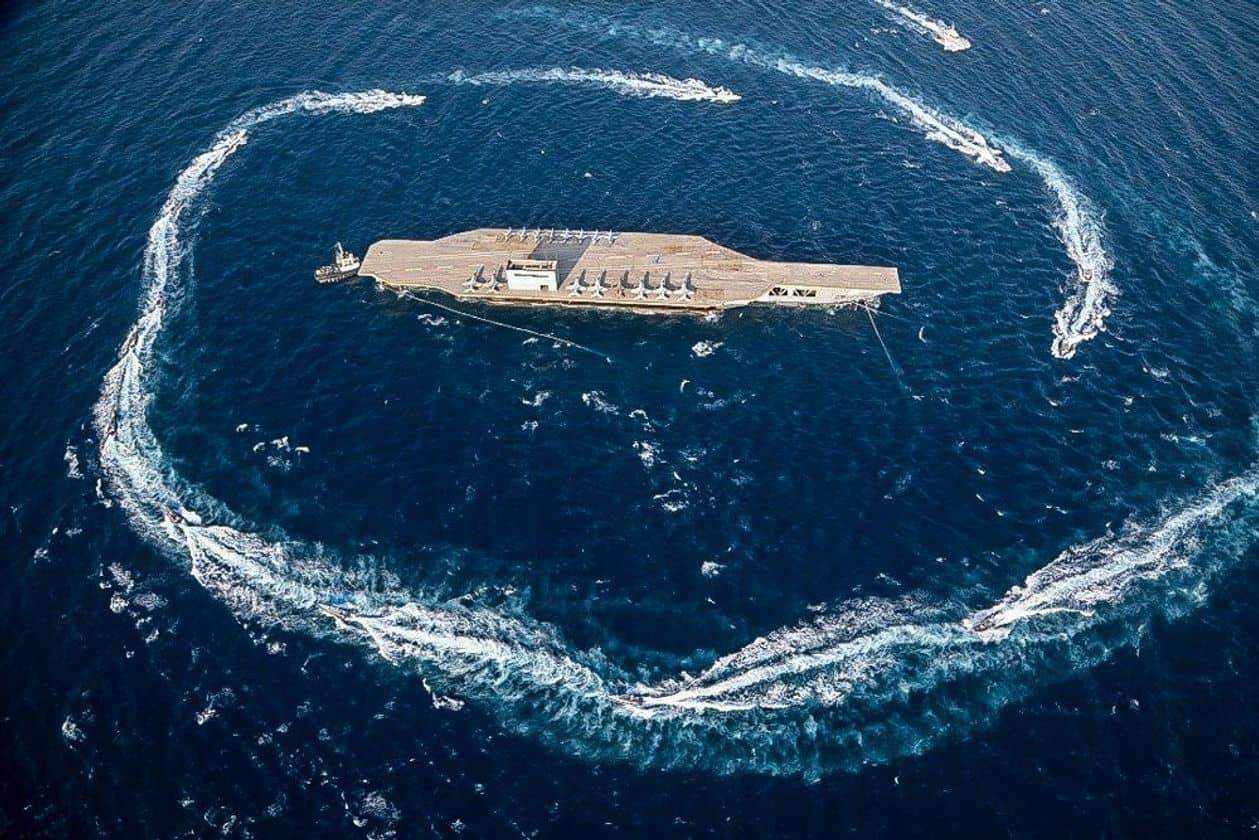Iran Fires Missiles in Drill, Prompting U.S. Bases to Go on Alert

Iran attacked a replica aircraft carrier with ballistic missiles and drones as part of a drill in the Persian Gulf, prompting two nearby U.S. military bases to briefly go on alert Tuesday amid fresh tensions between the two countries.
The paramilitary Revolutionary Guard, which spearheaded the two-day exercise, also hit targets on a cluster of uninhabited islands in the Gulf with jet fighters, Iranian media reported Wednesday. State television showed soldiers dropping by rope from a helicopter onto the deck of the warship mock-up, which resembled U.S. Navy carriers that routinely sail in the area.
Iran regularly holds war games aimed at displaying its weaponry and rallying the nation against foreign enemies.
This week’s drill came just days after an American jet fighter intercepted an Iranian passenger plane over Syria, forcing it to descend abruptly and injuring several passengers. It also follows a recent string of mysterious fires and explosions in Iran, including at a nuclear site in what some experts have said was likely foreign sabotage.
The missile barrage on Tuesday caused two American bases, the al-Dhafra Air Base in Abu Dhabi and the al-Udeid Air Base in Qatar, to put troops on alert, said Capt. Bill Urban, a spokesman for U.S. Central Command.
“Out of an abundance of caution, both bases enacted a heightened alert status. The incident lasted for a matter of minutes, and an all clear was declared after the threat indicator had passed,” Capt. Urban said Wednesday.
“The United States condemns these irresponsible missile launches in the vicinity of a congested maritime shipping lane,” he said.
Part of Iran’s exercise took place in the Strait of Hormuz, one of the world’s busiest oil shipping lanes, which Tehran in the past repeatedly has threatened to block amid hostilities with Washington.
Tensions with the U.S. reached a peak in January when an American drone killed top Iranian general Qassem Soleimani in Iraq. Iran responded by firing missiles at an Iraqi base housing U.S. troops.
During the missile strike, when Iran’s air defenses were on high alert for an American retaliatory attack, the Revolutionary Guard mistakenly shot down a Ukrainian passenger plane. Drills such as the one this week are also intended to boost the military’s image domestically, which in the case of the Revolutionary Guard was damaged by its downing of the passenger plane.
Recent events come as the U.S. and Israel are pushing for an extension of a United Nations arms ban on Iran that is set to expire in October. The embargo stems from the 2015 international deal to curb Iran’s nuclear program. The Trump administration withdrew from the multilateral accord in 2018, saying that the deal didn’t go far enough in constraining Iran’s other military activities.
Iran’s ballistic missile program, on display this week, is at the center of such U.S. concerns. When Iran sent its first military satellite into orbit in April, Secretary of State Mike Pompeo said the launch was evidence that the Revolutionary Guard’s space program wasn’t intended to be peaceful.
The satellite, called Nour-1, monitored this week’s war games from its orbit above the Earth, according to the semiofficial Fars news agency, which on Wednesday released what it said was imagery captured by the satellite of the U.S. al-Udeid Base in Qatar.
The most recent flare-up between Tehran and Washington was the intercept of the Iranian passenger plane over Syria. The U.S. said its jet fighter conducted a visual inspection of the airliner to make sure it was civilian, but Iran said the maneuver violated international aviation laws.
In a televised cabinet meeting Tuesday, Iranian President Hassan Rouhani criticized the international community for allowing the U.S. to “impertinently commit dangerous mischiefs” in international airspace.
“Someone who sends a jet fighter next to a passenger airplane has committed air terrorism and should be dealt with as a terrorist,” Mr. Rouhani said.
The U.S. in March conducted two military exercises in the vicinity of Iran—a biennial drill with the United Arab Emirates and a joint exercise with Israel involving F-35 jets.
Photo A photo on the Revolutionary Guard website shows Iranian military vessels circling a mock-up aircraft carrier during war games in the Strait of Hormuz. - PHOTO: SEPAHNEWS/ZUMA PRESS











